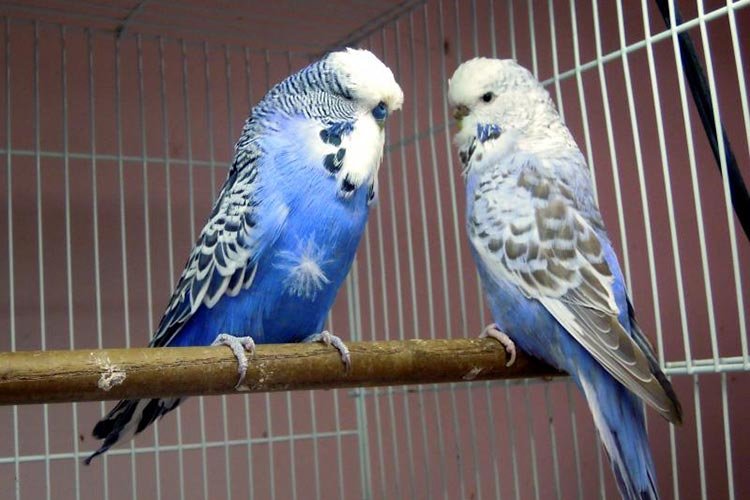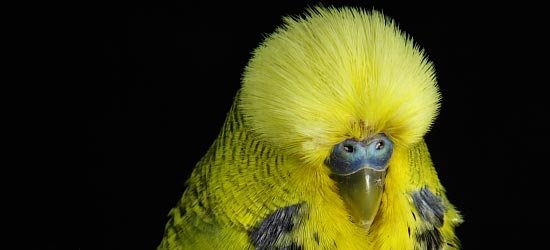
How did the English budgies come about?
The Australian parakeet is the one known as the common parakeet, but after a long time of time and hard work, a new species created that was baptized as the English parakeet or English budgie, since it was bred in England.
We are really dealing with a rather new species, because the English budgie took more than 50 years to become what it is today. It was possible because of the huge efforts of breeders. The English budgie we know today was born in 1989.

How does an English budgie look like?
It is quite easy to tell the difference, as the English parakeet has a yellow neck and throat. The throat has a several black spots of the same size, on each side of the neck it has a few dark blue drops that end in two small black spots. Its beak is light-colored, except in the area where it joins the face, which has some flesh without blue feathers.
Their chest, abdomen and lower tail are light green, dropping down to their short legs, which are light blue in color. However, its neck, back and wings are a mixture of yellow and black in feathers. It is especially distinguished by its large size when it is standing on the hangers.
There are English budgies distinguished by being smaller, about 10 cm, and others that can reach 15 cm. Instead of having smooth plumage, they can have them with many feathers or a small crest on the head. In these cases, it is considered a “pseudo” English budgie.
What to know about caring of an English budgie
Caring of an English budgie is not too different from other parakeets. Since it is not very large, you will only need a suitable cage in which it can stretch its wings from time to time to fly around. It is not an aggressive budgie and it usually does not mind sharing its cage with other kind of budgerigars.
Since it does not have sexual dimorphism, its breeding is not highly recommended for people without experience. Breeding them is not much different from obtaining a common Australian parakeet, but getting a pure English budgie is quite complicated, even for more experienced breeders.
Their diet is mainly made up of canary seed, but you can also give them other foods such as pieces of fruit, vegetables or seeds, as long as they are not germinated, so that they receive nutrients properly. So that its plumage always looks shiny, it is good to give it some vitamin complex in the water.
It is not a bird intended for training, nor it is well thought of as a domestic bird, but rather as a species that was created for exhibition contests. However, some breeders often teach them some tricks such as how to climb on your finger or eat out of your hand. It is not as clever as other birds, but you can teach it these little tricks without much effort.
